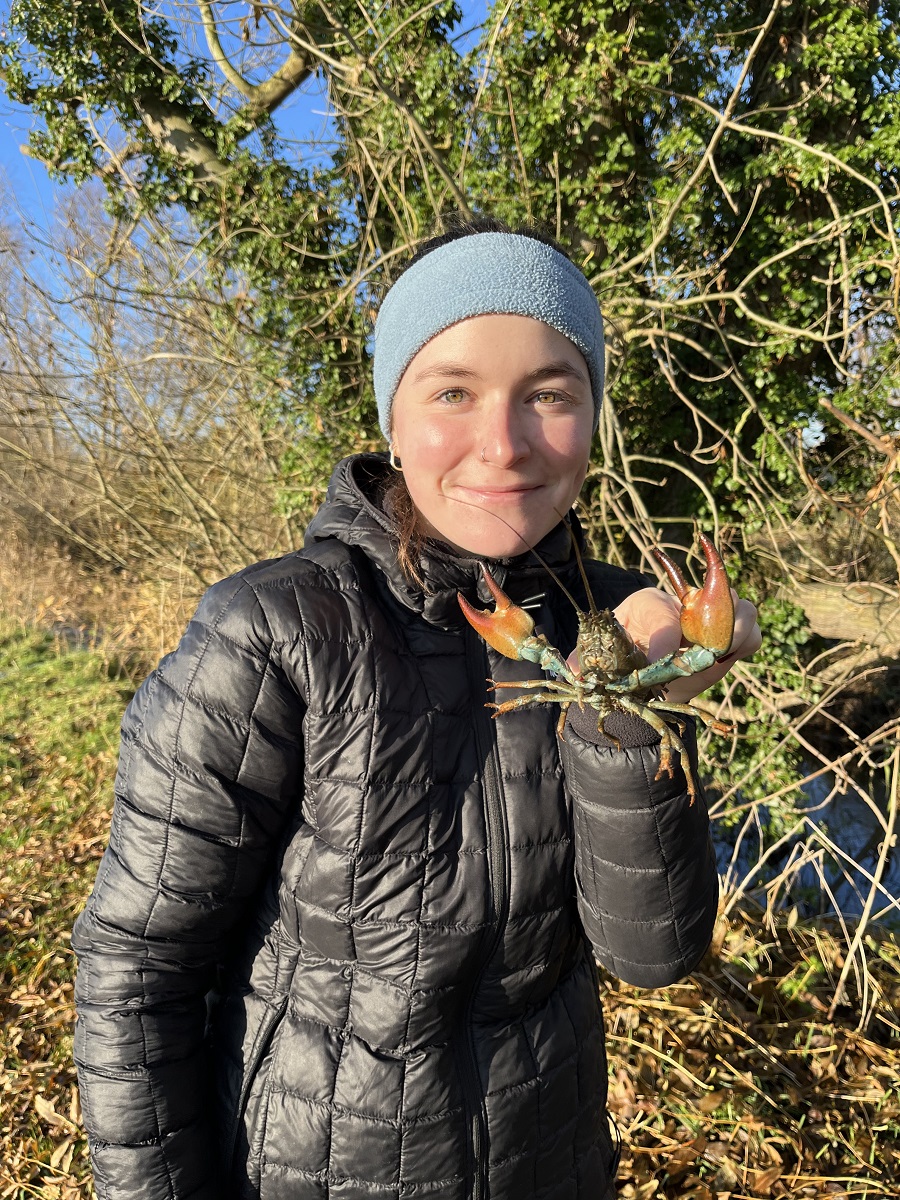When Ashley Hoblyn (Zoology MPhil 2023) was considering her postgraduate studies, she pondered two options: sticking or twisting.
Stay at McGill University in her native Montreal, Canada, or apply to the University of Cambridge, where she had familial history which meant Gonville & Caius was her preferred College.
“My grandfather and great-grandfather came to Caius, but I wasn’t going to apply unless there was a lab that was studying what I wanted to study,” she says.
Fortunately that was the case, and, although she would have been happy to continue at McGill, Ashley moved to Cambridge, to the satisfaction of her grandfather, John Hoblyn (Natural Sciences 1952).
“He’s very reserved and British. He just said ‘well done!’ I think now I might be the favourite grandchild – for a bit!” Ashley jokes.
“He used to tell me stories about what he used to do as an undergrad – climbing the wall to bypass a curfew. He’s going to visit and I want to take him to formal.”
Her great-grandfather, Thomas Hoblyn (Natural Sciences 1924), was also a Caian. Her grandfather, who now lives in Canada, went on to become an engineer, as did her father, who did not study at Caius. Her father died when she was young. As Ashley began her undergraduate studies, she hoped to follow in her father’s footsteps by pursuing a similar route, before finding her niche.
“I was going to study Engineering like my father did, but I switched to Environmental Science because I was 10-times happier learning about something I cared so much about,” adds the MCR Green Officer. “It would have been nice to be an engineer like him, but, at the end of the day, I thought to myself – I’m sure he would way rather I study something I actually enjoy.”
Ashley enjoyed the invasive species course during her undergraduate degree at McGill and is assessing the impact of North American Signal Crayfish on the biodiversity of chalk streams near Cambridge. Specifically she has spent time in villages south of Cambridge on the Rivers Shep and Mel, in Shepreth and Meldreth, respectively, conducting her fieldwork as part of the University’s Conservation Research Institute.
“We wanted to focus on chalk streams because they have such specific biodiversity and are rare,” she adds.
“We tracked crayfish abundance to see if that correlates with aquatic biodiversity.”
Assessing the impact of the non-native crayfish is important because they burrow in sediment, making the water murky, reducing the light and affecting aquatic plants and invertebrates. They also out-compete native species in the search for food, and Ashley did not find any native crayfish when sampling in The Shep or The Mel.
Further fieldwork is planned for later this term.


